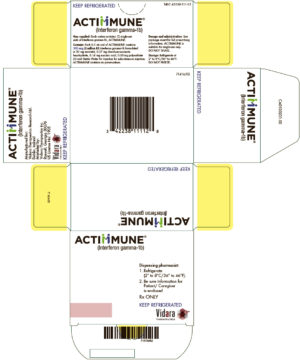

Notably, the IFN-γ symmetry suggests that a single molecule can bind simultaneously to two receptors, amplifying the underlying responses. During synthesis, after multiple N-glycosylation, both subunits bind in an antiparallel manner, constituting a mature 50 kDa molecule ( 19, 20). Interferon-gamma is a homodimer formed by the non-covalent association of two 17 kDa polypeptide subunits. In fact, since Wheelock who reported that IFN-γ inhibited viral replication in 1965 ( 17), it took around 30 years to envisage this cytokine as a target of antitumor immunity ( 18). This review focuses on type II IFN signaling, cellular functions, and directed therapies and was encouraged by novel findings revealing regulatory mechanisms of IFN-γ and its prognostic as well as therapeutic potential. Notably, it is also known to play a pivotal function on cancer immune surveillance, stimulating antitumor immunity and promoting tumor recognition and elimination ( 10– 16). The role of type II IFN in promoting host immune response to microorganisms is similarly well documented. Moreover, whereas almost all nucleated cells respond to type I IFN, type III IFNs response is restricted to tissues with a high risk of viral exposure and infection, as the mucosal surfaces. Despite the similar function of type I and III on antiviral infections, it is the viral tropism that dictates the relative contribution of each IFN ( 9). To date, type I and type III IFNs have been mainly involved in host–pathogen interactions, and their expression is activated through immune system sentinel receptors, such as pattern recognition receptors. Most recently, a type III IFN family was described to be composed of four homologous proteins (IFNλ1–4), which bind the IFNλR1 and interleukin (IL)-10Rβ heterodimeric receptor. It is more restrictively expressed and is structurally and functionally different from the other types of IFNs. IFN-γ is the lone member of type II IFN family. The human type I IFN family comprises 17 distinct proteins, mainly represented by IFN-α and IFN-β, which are ubiquitously expressed and signal through their cognate receptor, composed by IFNαR1 and IFNαR2 subunits. This review discusses the current knowledge on the pro- and antitumorigenic effects of IFN-γ as part of the complex immune response to cancer, highlighting the relevance to identify IFN-γ responsive patients for the improvement of therapies that exploit associated signaling pathways.

Consequently, major research efforts are required to understand the immune contexture in which IFN-γ induces its intricate and highly regulated effects in the tumor microenvironment. However, the IFN-γ-mediated responses are still positively associated with patient’s survival in several cancers. In fact, recent reports suggested that it may also play a protumorigenic role, namely, through IFN-γ signaling insensitivity, downregulation of major histocompatibility complexes, and upregulation of indoleamine 2,3-dioxygenase and of checkpoint inhibitors, as programmed cell-death ligand 1. Although broad evidence implicating IFN-γ in tumor immune surveillance, IFN-γ-based therapies undergoing clinical trials have been of limited success. This effector cytokine, often considered as a major effector of immunity, has been used in the treatment of several diseases, despite its adverse effects. Interferon-gamma (IFN-γ) is a pleiotropic molecule with associated antiproliferative, pro-apoptotic and antitumor mechanisms. 5Departamento de Patologia e Oncologia, Faculdade de Medicina, Universidade do Porto, Porto, Portugal.4IMM – Instituto de Medicina Molecular João Lobo Antunes, Faculdade de Medicina, Universidade de Lisboa, Lisbon, Portugal.3ICBAS – Instituto de Ciências Biomédicas Abel Salazar, Universidade do Porto, Porto, Portugal.2INEB – Instituto de Engenharia Biomédica, Universidade do Porto, Porto, Portugal.1i3S – Instituto de Investigação e Inovação em Saúde, Universidade do Porto, Porto, Portugal.Flávia Castro 1,2,3 Ana Patrícia Cardoso 1,2 Raquel Madeira Gonçalves 1,2,3 Karine Serre 4 Maria José Oliveira 1,2,5*


 0 kommentar(er)
0 kommentar(er)
